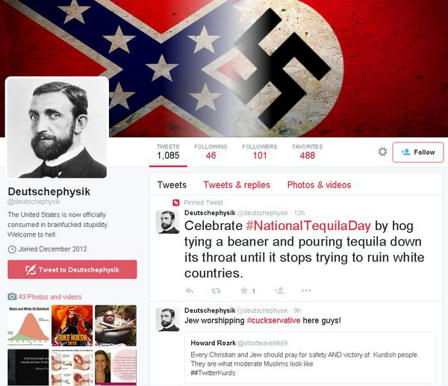From Allen C. Guelzo, at USA Today, "What if the South had won the Civil War? 4 sci-fi scenarios for HBO's ‘Confederate’":
The new project from the 'Game of Thrones' creators could shock us by exposing how little of the Confederate future we avoided.Still more.
“What if” has always been the favorite game of Civil War historians. Now, thanks to David Benioff and D.B. Weiss — the team that created HBO’s insanely popular Game of Thrones — it looks as though we’ll get a chance to see that “what if” on screen. Their new project, Confederate, proposes an alternate America in which the secession of the Southern Confederacy in 1861 actually succeeds. It is a place where slavery is legal and pervasive, and where a new civil war is brewing between the divided sections.
The wild popularity of Game of Thrones has already set the anxiety bells of progressives jangling over how much a game of Confederate thrones might look like a fantasy of the alt-right. Still, if Benioff and Weiss really want to give audiences the heebie-jeebies about a Confederate victory, they ought to pay front-and-center attention to how close the real Confederacy also came to the fantasies of the alt-left, and what the Confederacy’s leaders frankly proposed as their idea of the future.
The general image of the Confederacy in most textbooks is a backwards, agricultural South that really didn’t stand a chance against the industrialized North. But it simply isn’t true that the Confederate South was merely a carpet of cotton plantations, and the North a smoke-blackened vista of factories. Both North and South in 1861 were largely agricultural regions (72% of the congressional districts in the Northern states on the eve of the Civil War were farm-dominated); the real difference was between the Southern plantation and the Northern family farm. Nor did the South lag all that seriously behind the North in industrial capacity. And far from being a Lost Cause, the Confederacy frequently came within an ace of winning its war.
So, if Benioff and Weiss want to steer their fantasy as close as they can to probable realities, they should consider a few of these scenarios as the possible worlds of Confederate:
A successful Confederacy would be an imperial Confederacy. Aggressive Southerners before 1860 made no secret of their ambitions to spread a slave-labor cotton empire into Central and South America. These schemes would begin, as they had in 1854, with the annexation of Cuba and the acquisition of colonies in South America, where slave labor was also still legal. This would bring the Confederates into conflict with France and Great Britain, since France was also plotting to rebuild a French empire in Mexico in the 1860s, and the British had substantial investments around the Caribbean rim. The First World War might have been one between Europeans and Confederates over the future of Central and South America.
A successful Confederacy would have triggered further secessions. There were already fears in 1861 that the new Pacific Coast states of California and Oregon would secede to form their own Pacific republic. A Confederate victory probably would have pushed that threat into reality — thus anticipating today’s Calexit campaign by 150 years — and in turn triggered independence movements in the Midwest and around the Great Lakes. The North (or what was left of the United States) would bear approximately the same relation to these new republics as Scandinavia to modern-day Europe.
A successful Confederacy would have found ways for slavery to evolve, from cotton-picking to cotton-manufacturing, and beyond. The Gone With the Wind image of the South as agricultural has become so fixed that it’s easy to miss how steadily black slaves were being slipped into the South’s industrial workforce in the decade before the Civil War. More than half of the workers in the iron furnaces along the Cumberland River in Tennessee were slaves; most of the ironworkers in the Richmond iron furnaces in Virginia were slaves as well. They are, argued one slave-owner, “cheaper than freemen, who are often refractory and dissipated; who waste much time by frequenting public places … which the operative slave is not permitted to frequent.”
A successful Confederacy would be a zero-sum economy. In the world of Confederate, the economy would be a hierarchy, with no social mobility, since mobility among economic classes would open the door to economic mobility across racial lines. At the top would be the elite slave-owning families, which owned not only assets but labor, and at the bottom, legally-enslaved African Americans, holding down most of the working-class jobs. There would be no middle class, apart from a thin stratum of professionals: doctors, clergy and lawyers. Beyond that would be only a vast reservoir of restless and unemployable whites, free but bribed into cooperation by Confederate government subsidies and racist propaganda.


